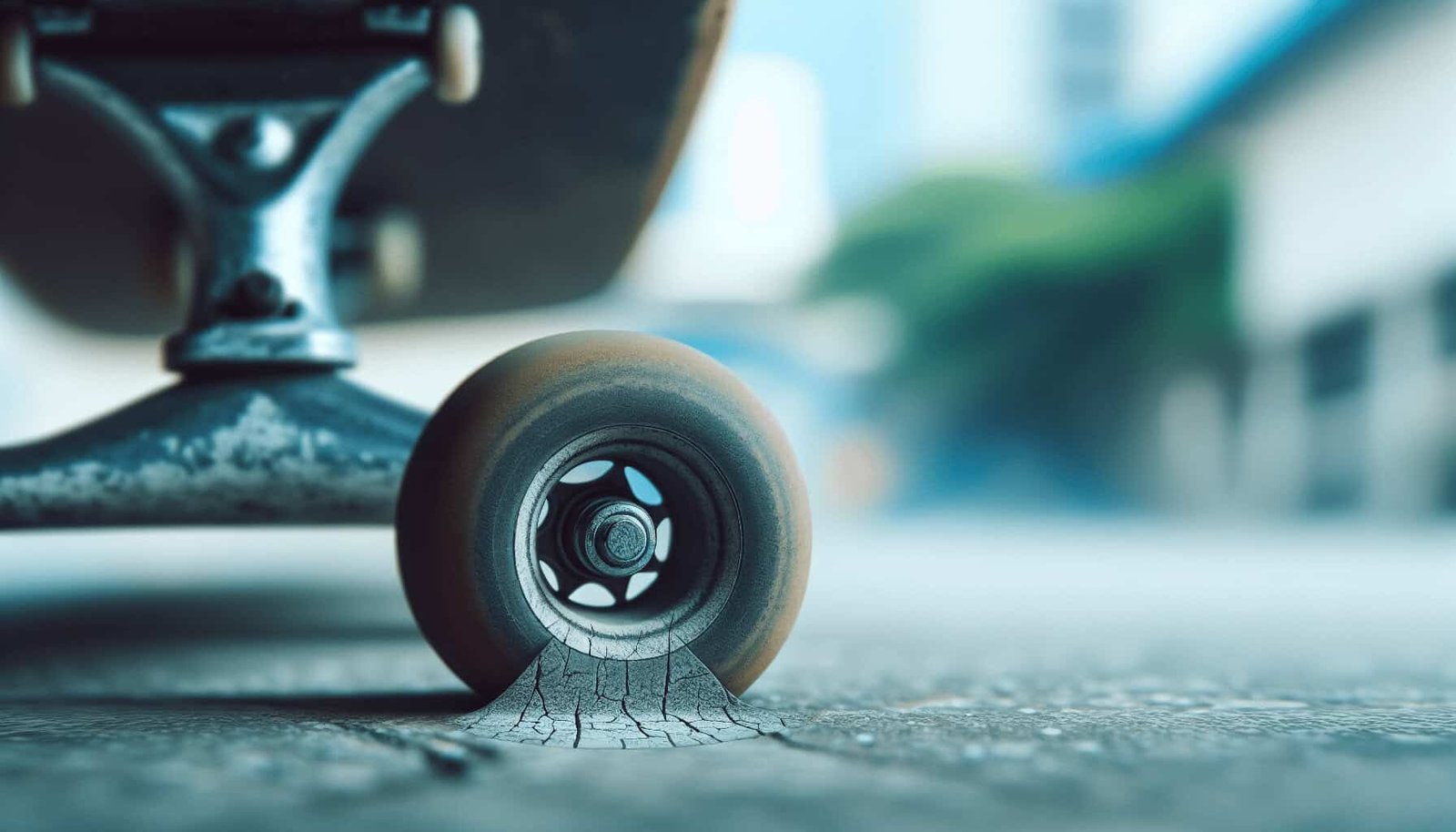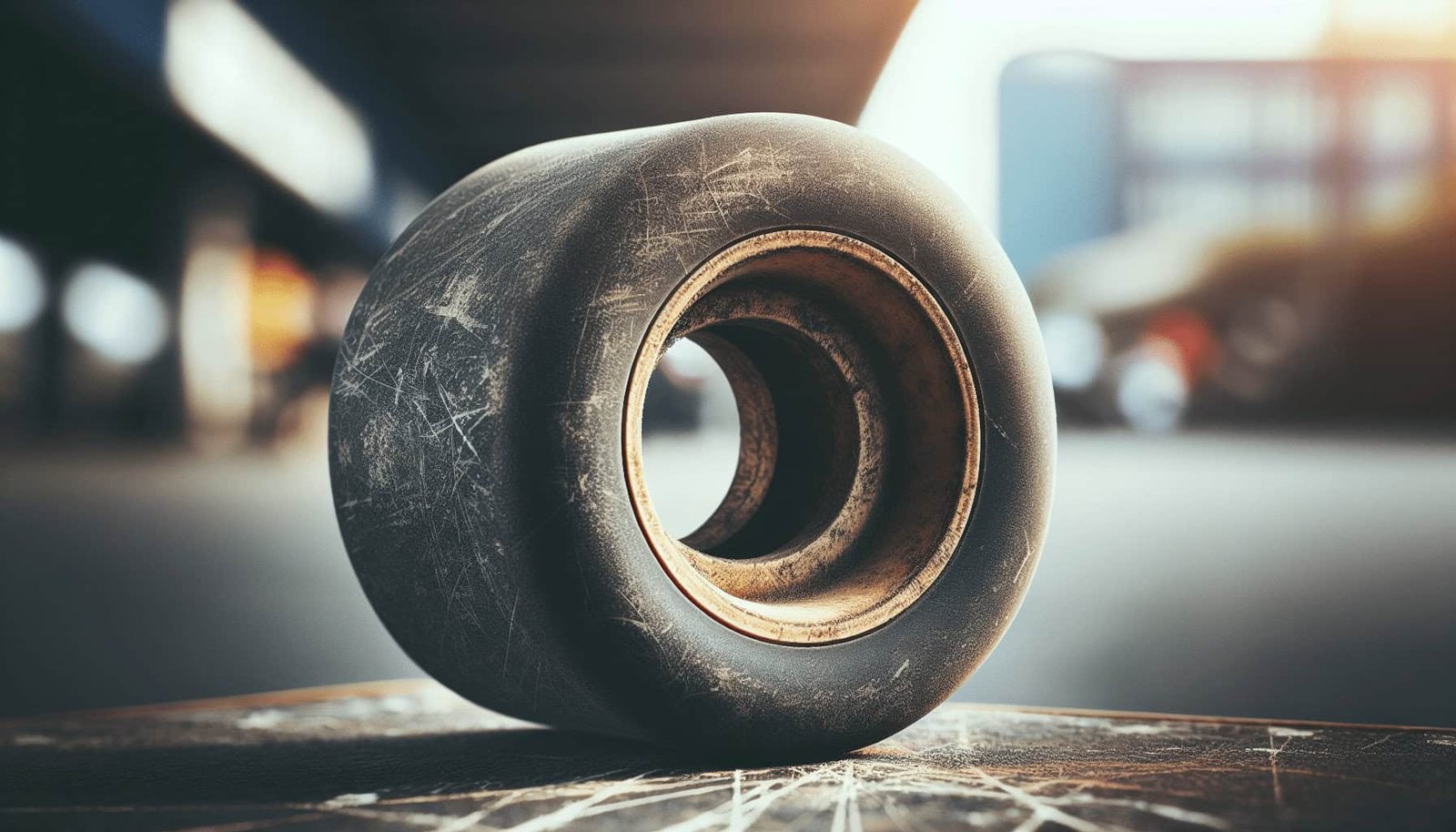Have you ever found yourself frustrated by flatspots on your skateboard wheels? Whether you’re new to skateboarding or an experienced rider, flatspots can be annoying and can impact your ride. Knowing how to deal with them and, more importantly, how to prevent them, can make a big difference in your skating experience.

What Are Skateboard Wheel Flatspots?
Flatspots are areas on your skateboard wheels that have worn down unevenly, creating a flat section. This uneven wear can cause vibrations or a “thud-thud” sensation while you’re riding, particularly noticeable when sliding or turning.
Why Do Flatspots Form?
Understanding why flatspots form can help you take steps to prevent them. Here are some common reasons:
Heat and Friction: When you perform slides and other maneuvers that cause your wheels to drag sideways, the heat and friction created can wear down your wheels unevenly.
Hard Stops: Sudden stops, especially on rough pavement, can create flatspots since the wheels skid and drag against the ground.
Wheel Material: Softer wheels are more prone to flatspots because they wear down more quickly compared to harder wheels.
| Cause | Description |
|---|---|
| Heat & Friction | Created during slides, resulting in uneven wear |
| Hard Stops | Sudden stops that cause skidding |
| Wheel Material | Softer wheels wear faster and are more susceptible to flatspots |
How Can I Deal With Existing Skateboard Wheel Flatspots?
After discovering flatspots on your wheels, it can be tempting to consider replacing them immediately. However, there are a few methods you can try first.
Rotate Your Wheels
One of the simplest solutions is to rotate your wheels. By changing the position of your wheels, you can ensure that the wear is more evenly distributed, potentially eliminating the flatspot over time.
- Remove the Wheels: Use a skate tool or a wrench to remove the wheels from your trucks.
- Swap Positions: Swap the position of the wheels, moving the front wheels to the back, and vice versa, or simply rotate each wheel 180 degrees.
- Reinstall the Wheels: Securely fasten the wheels back on.
Make sure to keep track of your rotations for future maintenance.
Sanding Down the Flatspots
If rotating the wheels doesn’t resolve the issue, you can try sanding down the flatspots.
- Secure the Wheel: Remove the wheel and secure it in a vice or clamp.
- Sand the Flatspot: Use a coarse sandpaper or file to smooth out the flatspot. Make sure to sand evenly.
- Test the Wheel: Reinstall the wheel and take it for a test ride. Repeat if necessary until the flatspot is reduced.
Using a Lathe
A lathe can give you precise results to smooth out flatspots, but it requires specialized equipment and skills. If you don’t have access to a lathe, you may want to take your wheels to a professional.

Preventing Skateboard Wheel Flatspots
Prevention is always better than dealing with the aftermath. There are several ways you can minimize the risk of developing flatspots.
Choose the Right Wheels
Choosing the right wheels for your style of skating can help prevent flatspots. Wheels come in different durometers (hardness levels), and selecting the appropriate hardness can make a big difference.
For Cruising: Choose softer wheels, around 78A to 85A durometer. These wheels absorb shocks and are great for cruising but may wear quicker.
For Tricks and Slides: Medium to harder wheels, with a durometer around 95A to 101A, are ideal. They provide better durability and are less likely to form flatspots.
| Skating Style | Preferred Durometer (Hardness) |
|---|---|
| Cruising | 78A to 85A |
| Tricks and Slides | 95A to 101A |
Practice Controlled Sliding
Practice makes perfect, and learning how to slide smoothly without dragging your wheels can significantly reduce the chances of forming flatspots. Experiment with different techniques and adjust your stance to achieve controlled slides.
Keep Your Bearings Clean and Lubricated
Dirty or dry bearings can cause your wheels to drag and wear unevenly. Regular maintenance, cleaning, and lubrication can ensure a smoother ride, reducing the risk of flatspots.
Avoid Abrasive Surfaces
Skateboarding on very rough or abrasive surfaces can accelerate wheel wear. While it’s not always possible to avoid these surfaces, try to minimize your time on them to preserve your wheels.

Additional Tips for Skateboard Wheel Maintenance
Caring for your skateboard wheels can extend their life and performance. Here are some additional tips:
Regular Inspections
Regularly check your wheels for signs of wear and tear. Catch issues early to prevent further damage.
Rotate Wheels Frequently
Regularly rotating your wheels, even before you notice flatspots, can ensure even wear and increase their lifespan. A good practice is to rotate your wheels every few weeks or after intense riding sessions.
Clean Your Wheels
Debris and grime can contribute to wheel deterioration. Regular cleaning with water and soap can help keep them in good condition. Ensure they are completely dry before reinstalling them.
Store Your Skateboard Properly
Store your skateboard in a cool, dry place away from direct sunlight. Prolonged exposure to heat and UV rays can weaken the wheel material over time.

Knowing When to Replace Your Wheels
Despite your best efforts at prevention and maintenance, there will come a time when your wheels need to be replaced. Here are some indicators:
Severe Flatspots: If the flatspots are too deep or extensive, it can be hard to restore the wheel to a round shape.
Cracking or Splitting: Visible cracks or splits in the wheels are a sign they need replacing.
Loss of Grip: If your wheels no longer provide the grip they once did, it may be time for new ones.
Knowing the right time to replace your wheels can prevent possible accidents and ensure a smoother skating experience.

Conclusion
Dealing with skateboard wheel flatspots can be a hassle, but with the right knowledge and maintenance, it’s manageable. Understanding what causes flatspots, how to deal with them when they occur, and how to prevent them in the first place will keep you skating smoothly and safely. Keep your gear in good shape, practice smart skating techniques, and you’ll spend more time enjoying your ride and less time worrying about worn-out wheels.
